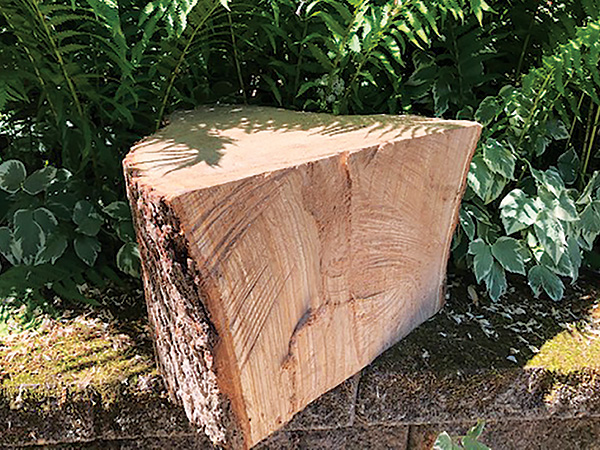
Wood is a tremendously versatile material. For thousands of years, people have made shoes, tools and buckets from wood, dinnerware, weapons, ships, furniture and jewelry … and the list goes on. The scope of its usefulness is really amazing.
This wide variety of applications cannot only require different wood species but also even wood at various stages of seasoning. “Seasoning” simply means the movement of water out of a piece of harvested lumber. Freshly harvested wood that has a high moisture content is called “green.” This term has nothing to do with the wood’s color. Fully seasoned wood is said to be at a state of equilibrium, but even dried wood with a finish applied to it remains hygroscopic, which means it can absorb moisture from the air.
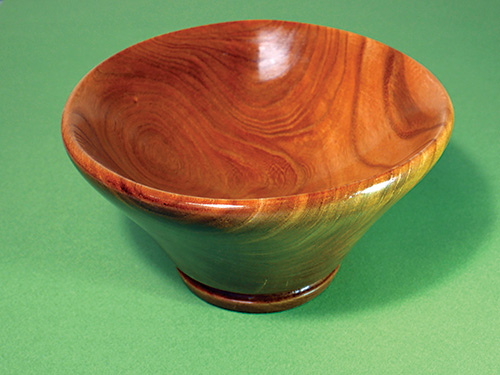
Over time, woodworkers have developed techniques to both minimize the effect of wood movement and take advantage of seasoning or a lack of it. Frame-and-panel construction, for example, was specifically created to accommodate wood’s seasonal cross-grain expansion and contraction.
Green Can Be Good
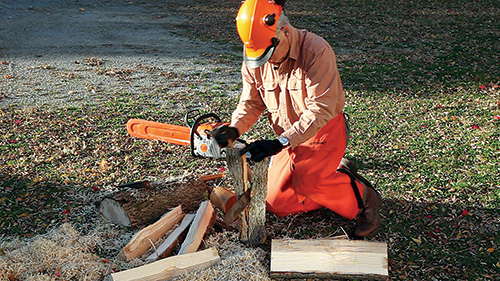
Once wood is fully seasoned or cured, it looses flexibility and tends to hold its shape stubbornly. We depend on this in woodworking. The last thing we want is a desktop or table that sways or easily bends under a load. Unseasoned green wood will almost always lead to disaster when it’s used for building fine furniture. As it dries, the wood shrinks, which can cause joints to open. The stock can also distort in a number of ways … none of them good.
But green wood has its advantages in some cases. Wood with a high moisture content is much easier to cut and shape than very dry wood. This is a big benefit when you are working with hand tools, as the softer tissue structure requires less muscle power to manipulate. So old-fashioned tasks like making wooden shoes or utensils were always done with green wood.
Uses for Green Wood
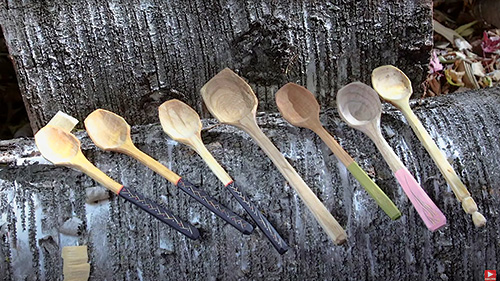
Green wood turns very easily, speeding the turning process up considerably. Woodturners take advantage of that fact when turning bowls and even spindles, if the blanks were riven from a log segment.
While the turner is working with green wood, they must decide whether they will be okay with the changes in a bowl’s appearance as it dries and becomes more oval-shaped. If not, turners will “rough out” the bowl, set it aside to allow it to come to equilibrium and then complete the turning process.
Stool and chair builders will sometimes take advantage of green wood by mounting legs that are fully seasoned into sockets on chair or stool seat blanks made of green wood. As the wood of the seat shrinks, the leg sockets become tighter and more secure. (This technique, of course, can go considerably wrong if the green seat board happens to split as it dries.)
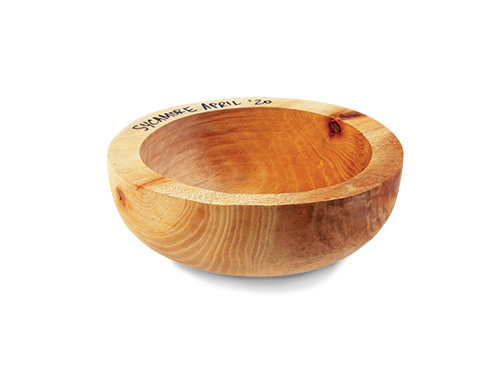
Ancient ship builders (and even some modern ones) used green lumber to make their boats, because it could be bent to form hulls and was more easily shaped by muscle power. Wood carvers and craftspeople who make treenware (wooden vessels or products used for food preparation or serving) also rely on green wood. So did bodgers (traditional forestbased woodturners) who turned table and chair legs from unseasoned wood.
Timber framers often choose green lumber, too. Since no kiln drying is involved, large planks and timbers are less expensive. Rustic furniture is another area where green lumber often makes good sense. The thick stock often used in this type of furniture does not distort easily as it seasons, and the joinery is usually not exacting. And just as green lumber is great for hand carving, it’s also a fine choice for power carving — a specialty that’s becoming more popular these days.
Throwing a Curve
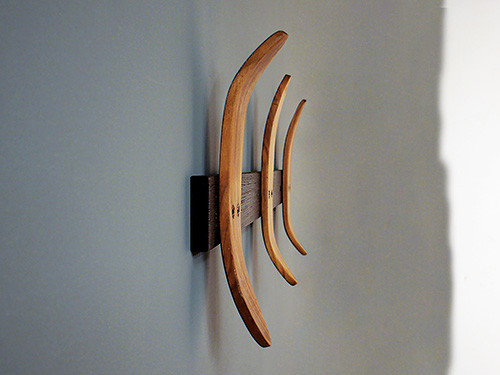
20 to 30 percent moisture content
steam bends well for making
curved projects such as these coat
hooks.
Steam bending wood has been around a long time, thanks to the flexibility of green wood. It’s an ideal technique for making skis, sled runners, rockers, coat hooks and much more. To bend wood with steam or heat, your stock should never be kiln dried. Unseasoned wood will bend most reliably if its moisture content is 20 percent or even more!
These days, most woodworking is done with kiln-dried lumber, and with good reason. It is the product that best suits our “flat-andstraight” woodworking tasks. But there are times when green lumber is actually still the better choice.





